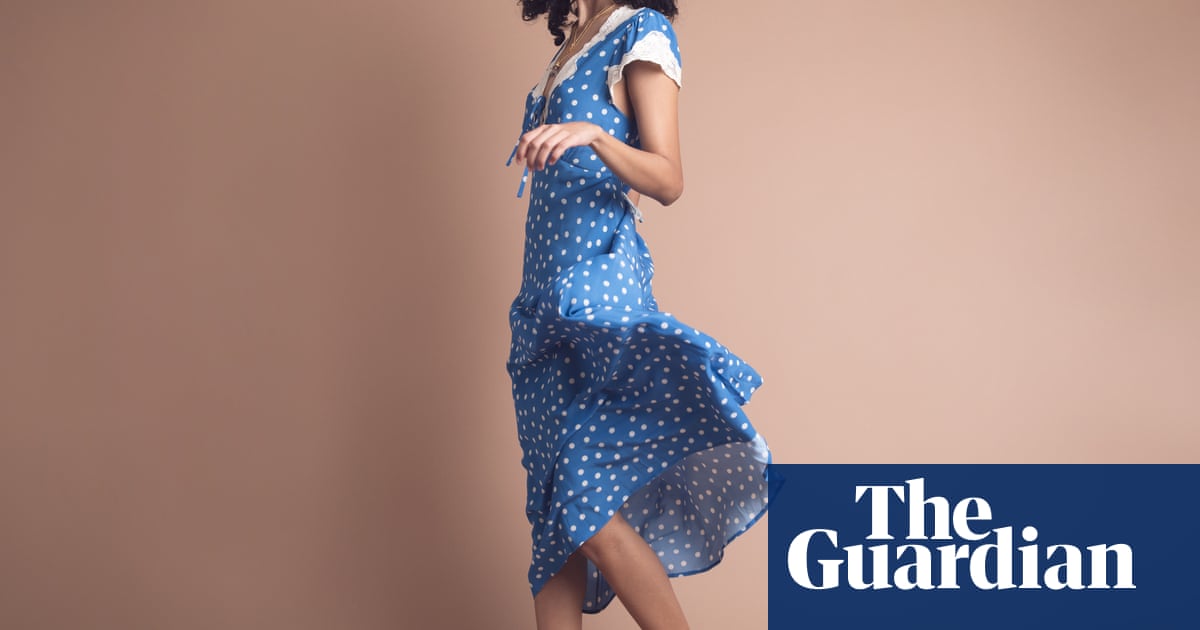Are you team spot, or team stripe? They resonate on different frequencies, in a subtle sort of a way. They are not exactly opposites, but they are not interchangeable either. Not chalk and cheese, but perhaps a bit like salt-and-vinegar and cheese-and-onion. Just different flavours.
A stripe is brisker, while a spot is giving whimsy. I guess there’s some old-fashioned gender stereotyping mixed up in that, because stripes are worn by everyone, whereas spots are almost exclusively found in women’s fashion. Stripes feel robust and functional, while spots are daintier, more playful.
The nautical associations of Breton tops and gondolier jerseys give stripes a muscular, active aura. Dots are more ethereal, like a map of a starry sky. Stripes usually signify daywear: a striped shirt looks absolutely right with a business suit, but would feel a bit off with a tuxedo, I think. Dots and spots have legs after dark – think of dots stitched into black tulle, or on sheer tights with a cocktail dress.
Both spots and stripes are everywhere right now, and the good news is there’s no need to pick a side. You can do a stripe today, and a spot tomorrow.Even better, you can do both at once. Take a look here. It works, right? It works because the spot and the stripe have more in common than divides them. They both have an allure that is rooted in feeling deeply, essentially familiar. They are part of our visual language from childhood.
Spots and stripes are the patterns we see in feathers and on rocks, on leaves and flowers. They can be as exotic as a zebra’s stripes or a leopard’s spots, or as common-or-garden as the yellow-and-black blur of a bumblebee, or daisies dotted on a lawn. They aren’t always childish, though. Both can be aesthetically sophisticated, too. Richly striped upholstery is stately home-coded in the world of interior design. And a spot can be museum-worthy if it’s by Damien Hirst or Yayoi Kusama.
A few thoughts on how to wear them, starting with spots and dots. I’m pretty confident with stripes, but less so with these. Spots can feel quite old-school Sloane Ranger, a little too “Princess Diana at school sports day” for comfort. To make them feel modern, the trick is to knock the edges off a little bit. Instead of going for polo-adjacent, ladies-who-lunch refinement, have some fun. Try a flat shoe. Wear something black. Choose a silhouette that is a little loose or oversized, not belted and ladylike.
Marks & Spencer have gone big on the polka dot this season. TheLyocell Rich Polka Dot Maxi(£79), is a lovely black dress with white spots, with a strapless ruched bodice and a long flowing skirt. Very Julia Roberts in Pretty Woman. Wear it with flats instead of wedges, and a slicked-back bun rather than barrel curls, to keep it modern.
I know I just said I was confident about how to wear stripes, but this is not exactly true. What I have is a very narrow comfort zone, in which stripes are always blue and white, and only ever worn on my top half. Basically a striped cotton button-down shirt with vertical blue-and-white stripes, or a long-sleeved boat-neck T-shirt with horizontal ones. Nothing wrong with either of these pieces, but both are pretty basic smart-casual fits. It is time to expand my horizons.
Sign up toInside Saturday
The only way to get a look behind the scenes of the Saturday magazine. Sign up to get the inside story from our top writers as well as all the must-read articles and columns, delivered to your inbox every weekend.
after newsletter promotion
Rugby shirt stripes– broader, and in bolder colours – are the way to earn my style stripes this summer. Either that, or wearing stripes below the waist. I am very taken with the jauntyLK Bennett sandalspictured above (RRP £329 but currently reduced), so I may do a shoe rather than a stripy trouser, even though I admit I’m taking the soft option here.
How to mix spots and stripes together? The trick is not to be too fair-minded. If you divide yourself neatly in two, the prints will fight. A spot as the main event and a stripe as an accessory (or vice versa) works better than a half-and-half divide. Looks like you’ll have to pick a side after all.
Hair and make up: Delilah Blakeney using Charlotte Tilbury. Styling assistant: Sam Deaman. Model: Teesta at Milk. Dress, £245,Rixo.Necklace, £240,Alemais
